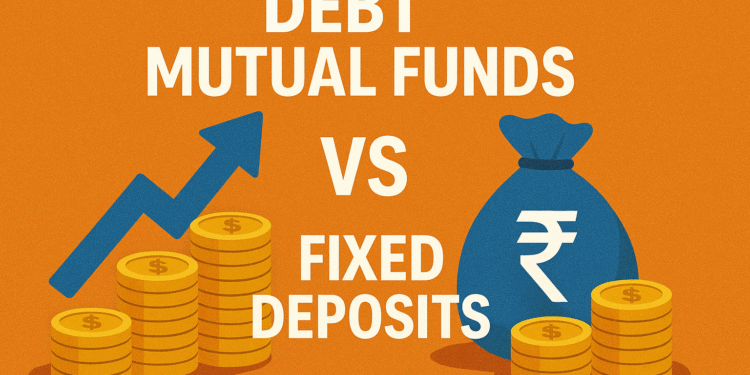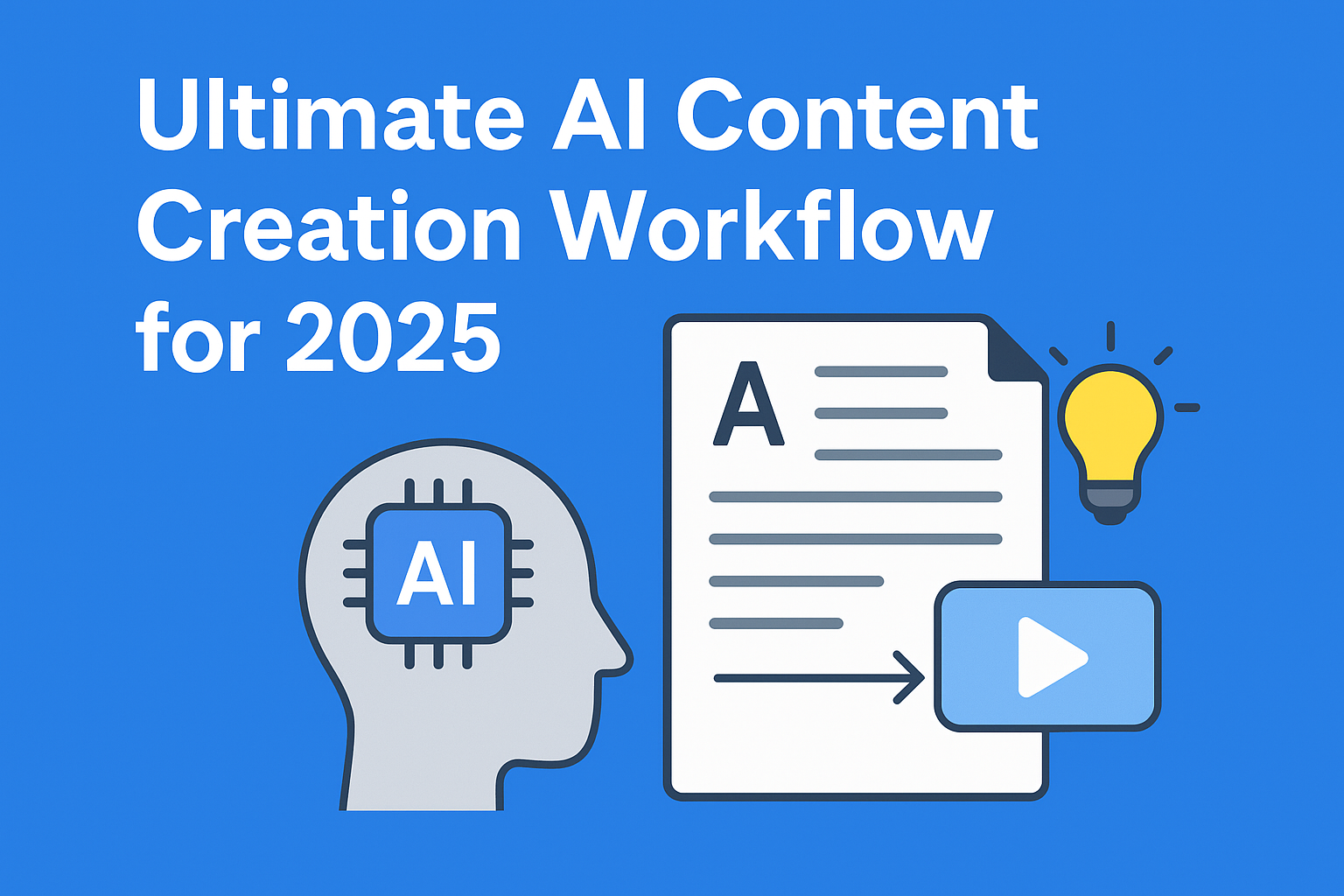Many Indian investors in 2025 face a simple choice: cling to the promise of guaranteed income or try market-linked options that may yield a bit more. Fixed deposits deliver preset interest and strong safety backed by DICGC cover up to ₹5 lakh per bank. By contrast, debt mutual funds invest in government securities, T-bills and corporate paper to aim for steadier, diversified returns.
Typical bank rates sit near 6–8% today, while bond-style schemes have averaged roughly 6–9% over cycles — but those returns are not guaranteed. Liquidity and exit norms differ too: FDs can levy penalties for early withdrawal, while bond funds allow redemptions on T+1 or T+2, sometimes with a small exit load.
This piece will compare returns, safety, tax, liquidity and suitability so you can match choices to your time horizon and comfort with NAV movement. Use this guide to decide whether to favor certainty or pursue modestly higher, market-linked gains.

Key Takeaways
- Fixed deposits offer guaranteed interest and strong principal safety for conservative investors.
- Debt mutual funds target market-linked returns and diversify across government and corporate papers.
- FDs typically yield ~6–8%; bond-style funds have averaged ~6–9% but with NAV variability.
- Post-2023 tax rules narrow the gap—gains from funds may be taxed at slab rates without indexation.
- Match choices to your need for liquidity, time horizon, and tolerance for modest market moves.
Why Indian investors are split in 2025: safety vs returns in a changing interest-rate market
Rising inflation and tighter rate cycles in 2025 have left retail investors re-evaluating the trade-off between certainty and potential gains. The choice now is less binary: some prefer guaranteed payouts, while others accept modest volatility for better flexibility.
What’s driving the confusion between traditional savings and modern schemes
Bank contracts lock in a set interest for the whole tenure. By contrast, professionally managed portfolios of T-bills, G‑Secs and corporate paper reprice every day. That design difference makes one product predictable and the other market-linked and variable.
How RBI moves and inflation shape real returns
When the central bank hikes, NAVs on longer duration holdings can fall in the short run, while rate cuts tend to help them recover. Meanwhile, if inflation runs near or above guaranteed bank yields, real purchasing power shrinks and some investors look to other options that might deliver higher returns over a period.
Liquidity adds another angle: early breaks on deposits can mean penalties, while many schemes allow T+1/T+2 redemptions, sometimes with an exit load. Match your goals, time horizon, and tolerance for short-term drawdowns when choosing between steady income and flexible returns.
- 2025 context: sticky inflation and volatile rates intensify the safety-versus-return debate.
- Suitability split: retirees often favor bank certainty; flexible investors may pick market-linked options for liquidity and potential gains.
Fixed Deposits explained: guaranteed returns, low risk, simple execution
For savers who value certainty, a fixed deposit turns a lump-sum deposit into guaranteed income. You place an amount with a bank or NBFC for a set period and earn a predetermined interest rate. The maturity value is known in advance, making planning simple.

How they work and common payout choices
A fixed deposit requires one upfront deposit and a chosen tenure. Typical 2025 rates at major banks sit around 6–8%, with some NBFCs advertising slightly higher slabs for seniors.
Payout options: cumulative (compounded) or non-cumulative with monthly, quarterly, half-yearly, or annual payouts to meet cash-flow needs.
Safety net: what DICGC covers
DICGC insurance covers bank deposits up to ₹5 lakh per depositor per bank. That limit includes principal plus interest and applies to each bank separately, giving a clear safety layer for most retail amounts.
Lock-in, penalties and reinvestment risk
Breaking a deposit early usually triggers a penalty and may re-price the interest, reducing the effective return. This makes premature withdrawal costly compared with instant redemptions in some funds.
Reinvestment risk matters: when the tenure ends in a lower-rate cycle, rolling over may deliver smaller income than your original plan.
| Feature | Description | Typical 2025 range |
|---|---|---|
| Principal safety | Guaranteed by issuer; bank deposits insured up to ₹5 lakh | High |
| Interest payouts | Cumulative or regular income options (monthly/quarterly) | 6–8% (banks) |
| Liquidity | Premature withdrawal allowed with penalty | Low to moderate |
| Taxation | Interest fully taxable at your slab rate | Post-tax returns vary by bracket |
| Best for | Conservative investors and retirees seeking stable returns | Short to medium term |
Debt Mutual Funds explained: market-linked returns and moderate risk
Pooled income vehicles aim to deliver steadier, market-linked returns with moderate volatility. These schemes gather investor money and invest across a range of fixed-income instruments to balance income and safety.
What they buy
- Treasury bills and government securities for sovereign exposure and low credit risk.
- High-grade corporate bonds for higher yield and commercial paper and certificates of deposit for short-term liquidity.
- Combination of accrual from coupons and mark-to-market positions drives outcomes.
Key risks and why NAVs move
When interest rates rise, bond prices fall and net asset values typically dip. The reverse happens when rates fall, especially for longer-duration portfolios.
Credit risk can hit returns if an issuer is downgraded or defaults. Liquidity stress in markets can also affect pricing.
Liquidity and exit rules
Most open-ended schemes settle redemptions on T+1 or T+2, giving faster access than many bank alternatives. Some schemes charge an exit load for early withdrawals—check the scheme document before investing.
| Feature | What it means | Typical use |
|---|---|---|
| Instruments | T-bills, G‑Secs, corporate bonds, CP, CDs | Income and liquidity mix |
| Risks | Interest-rate, credit, liquidity | Hold to match horizon |
| Returns | Accrual + mark-to-market; ~6–9% over cycles (not guaranteed) | 1–3 years and beyond |
| Management | Active duration and credit selection under SEBI rules | Professional oversight |
Today’s choice often comes down to whether you want locked-in income or a professionally managed portfolio that can move with rates. Fixed deposits give a preset interest rate and known maturity value. They are simple to understand and suited to short-term goals.

By contrast, debt funds pool money into T-bills, G‑Secs, corporate paper, CP and CDs. NAVs can rise or fall with interest-rate moves and credit events. Most schemes settle redemptions on T+1 or T+2, though some apply an exit load for short holdings.
- Returns: FDs typically offer ~6–8% in 2025; pooled bond schemes may average 6–9% over cycles but have no guarantees.
- Risk & safety: Bank deposits enjoy DICGC cover up to ₹5 lakh per bank; pooled bond products face rate and credit risks.
- Liquidity & costs: Breaking a deposit can mean penalties; pooled options charge expense ratios that trim returns.
| Feature | Bank deposits | Pooled bond schemes |
|---|---|---|
| Principal | Issuer-backed, insured (up to limit) | Market-linked, diversified |
| Access | Early withdrawal with penalty | T+1/T+2 redemptions; possible exit load |
| Tax | Interest taxable at slab | Gains taxable at slab (no indexation) |
Choose based on horizon, liquidity needs and tolerance for short-term NAV moves. Align allocations to goals and review issuer or fund selection for safety and management quality.
Returns and risk comparison: stable FDs vs market-linked debt funds
Many investors now weigh steady booked interest against potential upside from rate-sensitive portfolios in a shifting rate cycle.
Expected return bands in 2025
Baseline expectations: bank coupons in 2025 typically sit around 6–8%. Actively managed bond-style schemes may achieve 6–9% over cycles, but those figures are not guaranteed.
Volatility lens: duration and credit quality
Longer-duration portfolios swing more as interest rates move; a 5+ year portfolio can show notable NAV changes in months.
Higher-yield allocations add credit risk: they can deliver higher returns in calm markets but suffer sharp drawdowns on downgrades or defaults.
Stability lens: when predictability wins
Bank predictability helps when you need a fixed payout date or cannot tolerate short-term swings. There are no running expense ratios, though early exits carry penalties.
After costs and slab-based taxes, guaranteed payouts can sometimes outperform market-linked options for short horizons and highly taxed investors.
| Feature | Bank payout | Market portfolio |
|---|---|---|
| Typical 2025 returns | 6–8% | 6–9% (not guaranteed) |
| Volatility | Low | Moderate to high |
| Costs & tax | No fees; interest taxed at slab | Expense ratios, exit loads; gains taxed at slab |
Taxation in 2025: how post-2023 rules change FD vs debt fund math
Tax changes after 2023 altered the after-tax picture for common savings choices. This section explains how income from bank plans and market-linked vehicles is treated in 2025 and what that means for net returns.
FD taxation: All interest from fixed deposits is added to your total income and taxed at your applicable slab in the year it accrues or is credited. TDS may apply if interest crosses prescribed thresholds.

How market-linked gains are taxed now
Post-2023 treatment: gains from many pooled bond schemes are treated as short-term and taxed at slab rates with no indexation benefit. That removes the earlier long-term tax edge some investors used.
Practical post-tax checkpoints
For higher-slab taxpayers, net differences between bank coupons and accruals in market vehicles can be narrow. That makes liquidity, volatility and costs more decisive than tax arbitrage.
| Aspect | Bank interest | Market accrual |
|---|---|---|
| Tax treatment | Taxed at slab; TDS possible | Taxed at slab; no indexation |
| Holding period impact | Same | Same (no long-term break) |
| Key decision factor | Certainty of income | Liquidity & volatility |
Check scheme classification, verify TDS rules on deposits, and focus on post-tax, post-cost suitability. For complex situations, consult a tax professional.
Liquidity and access to money: breaking an FD vs redeeming a debt fund
Liquidity often decides whether an investment helps or hinders during an emergency. Know how access differs so you can plan cash needs and avoid surprises.
FD lock-ins, penalties, and impact on effective yield
Bank fixed deposits usually lock in a tenure. Early breakage typically triggers a rate cut and a penalty on the amount, which lowers your effective yield.
This re-pricing can be significant if you withdraw within a short period; the interest credited may be recalculated at lower applicable rates for the held period.
Debt fund redemptions, settlement timelines, and exit loads
Most open-ended debt funds allow online redemption with proceeds credited on T+1 or T+2. That makes them faster for short-term cash needs.
Some schemes apply an exit load for short holding periods—check the load before you invest. NAV movement until settlement can change the final payout.
| Aspect | Fixed deposits | Debt funds |
|---|---|---|
| Access speed | Slow to moderate; branch or digital break | Fast; online redemption, proceeds T+1/T+2 |
| Cost to exit | Penalty and rate re‑pricing | Possible exit load; expense ratio applies |
| Predictability | Broken amount is predictable after penalty | Payout varies with NAV until settlement |
Practical tip: For emergencies consider liquid or ultra-short schemes or ladder short-period deposits to balance quick access with steady returns.
Who should choose what: mapping products to goals, risk tolerance, and time horizon
Start with your timeline and cash needs; the right vehicle follows from that. In 2025, with tighter rate cycles and post-2023 tax rules, match choices to horizon, liquidity needs, and tolerance for NAV swings.
Best fit for conservative investors, retirees, and short-term goals
Conservative investors and retirees who value certainty often prefer fixed deposits. They offer booked payouts and DICGC cover up to ₹5 lakh per bank, which helps protect principal for short to medium terms.
When slightly aggressive investors may prefer debt funds for flexibility
Investors comfortable with modest NAV movement can choose debt funds for higher liquidity. Many settle redemptions on T+1 or T+2 and invest in T-bills, G‑Secs, CP and CDs, giving flexibility and potential to capture rate moves.
Use cases: emergency corpus, planned expenses, and laddering strategies
- Emergency corpus: ultra-short or liquid funds preserve access and cash-flow.
- Planned expenses (months to 1–3 years): stagger short-term deposits or short-duration schemes.
- Laddering: stagger maturities to reduce reinvestment risk and maintain rolling liquidity.
Blended approach: combining FDs and debt funds in one portfolio
Combine booked payouts for near-term needs with market-linked holdings for intermediate optimization. Calibrate amounts by monthly cash needs, emergency multiples, and tax bracket.

| Goal | Suggested mix | Why |
|---|---|---|
| Short-term cash | 70–100% deposits | Certainty and insured cover |
| 1–3 years | 50/50 deposits & short-duration funds | Balance liquidity and returns |
| Emergency buffer | 100% liquid schemes | Fast access (T+1/T+2) |
Practical tip: prioritize high-credit-quality schemes for essential goals and review allocations annually as RBI cycles and personal plans change.
Conclusion
In 2025, choosing between bank-term savings and market-linked allocations comes down to how much certainty you need and how much movement you can accept.
Fixed deposits offer booked interest and a DICGC backstop up to ₹5 lakh per bank, with typical rates near 6–8% (for example, Bajaj Finance quoted 6.95% non-seniors and 7.30% seniors in June 2025).
Debt mutual funds invest in T-bills, G‑Secs, corporate bonds, CP and CDs, settle redemptions on T+1/T+2 and can target 6–9% over cycles but carry NAV and credit movement and possible exit loads.
With post-2023 slab taxation applying to both, focus on liquidity, tenure and appetite for short-term swings. Blend booked deposits and market-linked holdings to match goals, review issuer strength, duration, credit quality, and adjust annually.
Act deliberately: assign each rupee a job – preserve, pay, or seek uplift – so your fixed-income strategy stays resilient as rates and inflation change.
FAQ
What are the main differences between FDs and market-linked fixed-income schemes in 2025?
Bank term deposits offer guaranteed interest and principal protection up to ₹5 lakh under DICGC, with predictable payouts and defined lock-in or premature withdrawal penalties. Market-linked fixed-income schemes invest in instruments such as treasury bills, government securities, corporate bonds, commercial paper, and certificates of deposit. Their value moves with interest-rate cycles and credit events, so returns are not guaranteed but can exceed deposit yields over certain periods.
How have RBI rate cycles and inflation affected real returns this year?
The Reserve Bank of India’s policy actions since 2023 have tightened or eased liquidity, which shifts yields on government papers and corporate borrowings. When policy rates rise, newly issued papers pay more but existing holdings can fall in market value. Inflation reduces purchasing power, so a 6–8% nominal deposit yield could mean low or negative real return if consumer prices rise faster.
What typical payout options and rates should I expect from bank term deposits in India?
Banks and non-bank lenders usually offer monthly, quarterly, or cumulative payout options. In 2025, retail term deposit rates commonly range around 6–8% for standard tenors, though senior citizen rates may be higher. Cumulative clauses compound interest, while periodic payouts suit income needs.
Is my bank deposit fully safe under DICGC insurance?
The Deposit Insurance and Credit Guarantee Corporation covers up to ₹5 lakh per depositor per bank for aggregate deposits in one bank, including principal and interest. Amounts above that carry the credit risk of the bank. Government guarantee applies only to scheduled commercial banks; cooperative banks may have different coverage.
How do premature withdrawals affect the effective yield on a term deposit?
Most institutions levy a penalty that reduces the applicable interest rate when you break a deposit early. That lowers your effective yield and can negate the advantage of guaranteed returns. Always check the penalty slab and compare it with potential market-linked alternatives for the same horizon.
What instruments do market-linked income funds typically buy?
These schemes hold a mix of government securities, treasury bills, short-term corporate bonds, commercial paper, certificates of deposit, and sometimes municipal or PSU papers. Fund managers choose maturities and credit profiles to match the fund’s stated duration and risk objective.
What are the primary risks with investing in market-linked schemes?
Interest-rate risk makes net asset values move when yields change; longer-duration holdings show larger swings. Credit risk arises if an issuer defaults or faces downgrade, causing mark-to-market losses. Liquidity risk can increase settlement times or widen bid-ask spreads during stress. Active management mitigates but does not eliminate these risks.
How liquid are redemptions from these funds, and are there exit charges?
Open-ended schemes typically settle redemptions on T+1 or T+2 depending on the segment, with some overnight or liquid options offering same-day access. Many funds impose an exit load for very short holding periods to discourage churn. Check the offer document for specific timelines and charges.
What return ranges can investors reasonably expect in 2025 for deposits versus market-linked funds?
Typical bank deposit rates sit around 6–8% nominal. Market-linked income schemes often target 6–9% over time, but these are not guaranteed and vary by duration and credit mix. Short-term horizons reduce the chance of outperforming a deposit due to market volatility and transaction costs.
How does duration and credit quality affect volatility and returns?
Longer-duration holdings amplify sensitivity to rate moves: when rates rise, prices fall more. Lower credit quality can boost yield but raises default risk and price swings. Funds that focus on high-quality, short-duration papers offer steadier returns, while longer or lower-grade portfolios aim for higher yields with higher volatility.
How are term deposit earnings taxed compared to gains from market-linked schemes after the 2023 tax changes?
Interest from bank deposits is fully taxable at your income-tax slab. For market-linked schemes, short-term capital gains taxed at your slab rate apply if held under the short-hold period; long-term gains may get indexation benefits depending on the specific tax rules applicable in 2025. Recent changes reduced some advantages once available under older rules, so compute post-tax returns for your slab and holding period.
Which option is better for emergency savings and why?
For an emergency corpus, predictability and immediate access matter. High-interest savings or short-maturity deposits give certainty and insured protection up to the prescribed limit. Some ultra-short market-linked schemes also offer quick liquidity and slightly higher yield but carry modest price risk, so keep a cushion that suits your risk tolerance.
When should a retiree prefer guaranteed deposits over market-linked income funds?
Retirees who rely on stable monthly income and cannot stomach principal swings generally prefer guaranteed deposits, especially within insured limits. Those comfortable with moderate NAV fluctuations and who seek inflation-beating post-tax returns may consider select short-duration, high-quality schemes to improve purchasing power.
Can investors combine both products for a balanced portfolio?
Yes. Laddering deposits across tenors gives cash-flow predictability and rate re-pricing. Complementing this with a slice of market-linked funds adds flexibility and the chance for higher yields. Allocation depends on goals, horizon, tax bracket, and risk appetite.
How do exit timelines compare when you need money urgently?
Breaking a bank term deposit can be instant but costs penalties and may reduce interest. Redeeming from a liquid fund can settle within the same day or T+1, often with minimal cost if you meet the exit-load window. Check settlement rules and any short-term charges before using either for liquidity needs.










